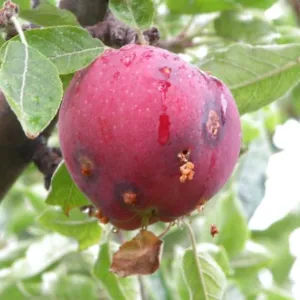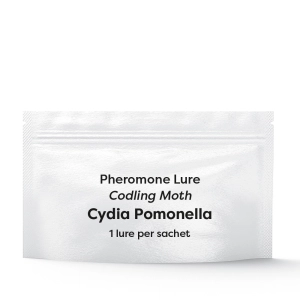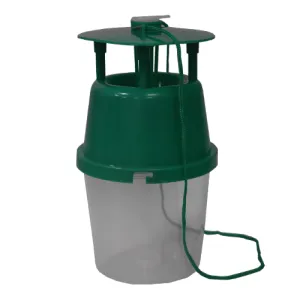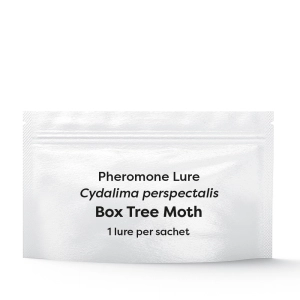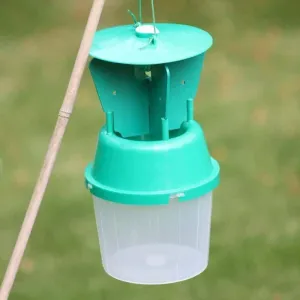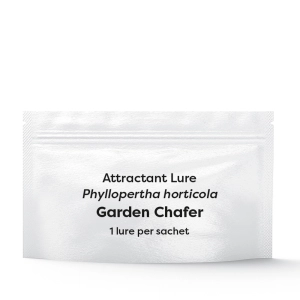If you’ve spent time nurturing fruit trees or ornamentals only to see your crop or plant ruined by caterpillars, you may well have come across pheromone traps when searching for a solution. But how do they work and are they effective at controlling the problem?
How do pheromone traps work?
Insects use pheromones to send messages for a variety of reasons – these might be related to food and territory, but also to announce their availability as mates.
These specific sex pheromones have been isolated over time by entomologists and are now used in a range of pheromone traps to lure the moths into the trap.
Pheromone moth traps attract male moths away from the females that are ready to breed. This has the effect of interrupting the breeding cycle with the aim of eliminating the pest from the target area.
Pheromone lures are specific to individual moth species and work in a highly targeted way. So, whilst some of the traps can be used for multiple moth species, it is the pheromone lure that dictates which moths will actually enter the trap. This helps to protect the ecosystem by ensuring that non-target species are not lured in.
Pheromone traps also allow you to monitor the extent of any infestation by providing a count of the volume of moths within the target area.
This should help you determine whether you only have a few moths that may not go on to impact a crop, or whether you have an influx that could require additional controls.
What do pheromone traps look like?
Pheromone traps come in various shapes and sizes but all of them will contain a lure – a small slow-release dispenser that emits the pheromone.
Lures will be packaged in an airtight foil sachet. Once opened, the lure should be placed into the trap according to instructions.
For most castellation-type traps, the lure is usually placed in a cage at the top. Castellation or funnel traps are made up of a cylindrical bowl that can contain water or a sticky pad. A funnel fits on top of this bowl and then the lid fits above the funnel and contains the lure.
You can buy tent shaped traps which use a sticky sheet upon which you place the lure. Agrigem sells the castellation trap variety, but both systems will lure the specific moth in and then kill them either by drowning if using water or trapping and retaining them if using sticky pads.
Castellation traps have small entry holes at the top of the funnel to prevent birds and larger moths from accidentally entering the trap.
How do I use a pheromone trap?
All traps can simply be hung in the affected trees or plants. The traps themselves will last a long time, but you will need to replace the lures and sticky sheets according to your specific trap instructions.
Codling moth trap lures can be replaced once every moth flying season, but box tree caterpillar moth trap lures will need to be replaced every 5-6 weeks.
If you are trying to monitor the level of moth infestation, you might find it useful to label your trap with the date you deploy it. This will give you a good idea of how many moths you have in the affected area over time.
Make sure you wash your hands before and after handling the bait lure and sticky pads.
How many traps do I need and when do I use them?
The number of pheromone traps you need depends on the type you buy so always read the product information carefully before buying.
Our pheromone traps for codling moth are sufficient to cover 16-20 trees or up to half an acre. For these specific traps, you should use them from May onwards or when the trees are in bloom.
Our box tree caterpillar moth traps cover 180m2 and should be used when caterpillars are first observed – usually around April.
If you are buying a chafer beetle trap, you will need four traps per 1500m2, and a replacement lure every six weeks. These traps should be used between May and June.
Pheromone traps are an excellent way to help control damage to plants and fruits without using chemicals - so are perfect for organic gardening.




